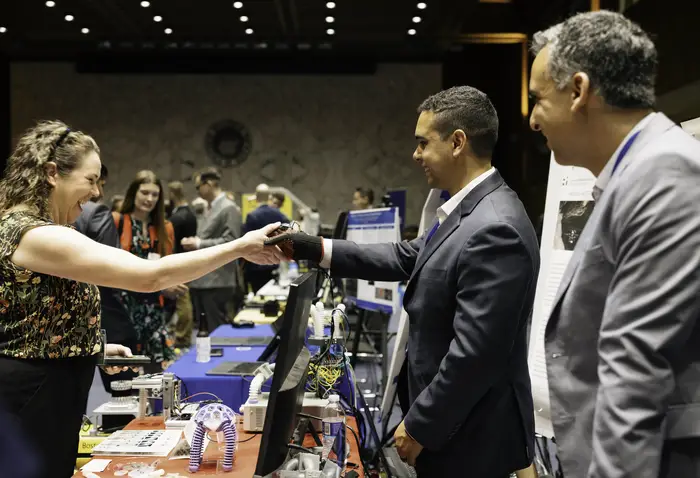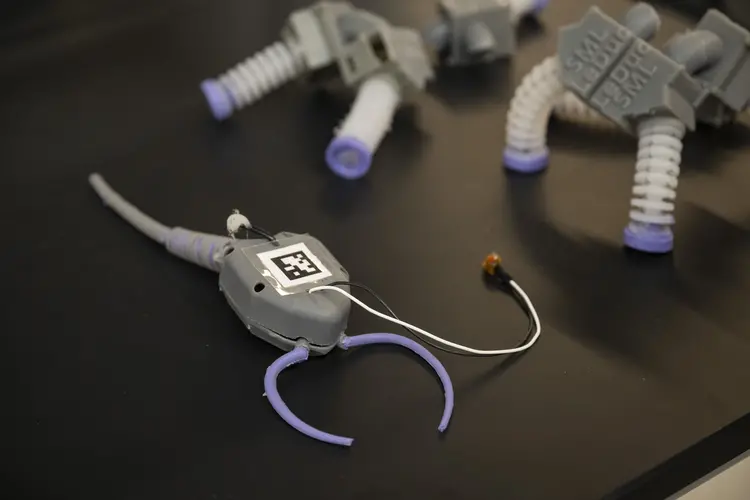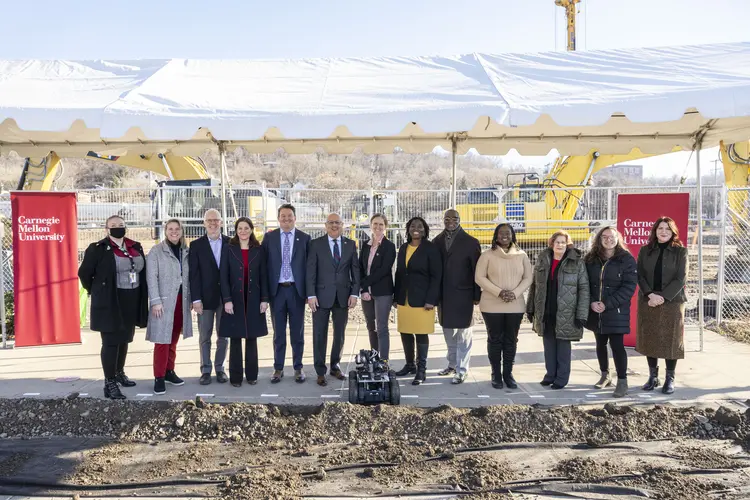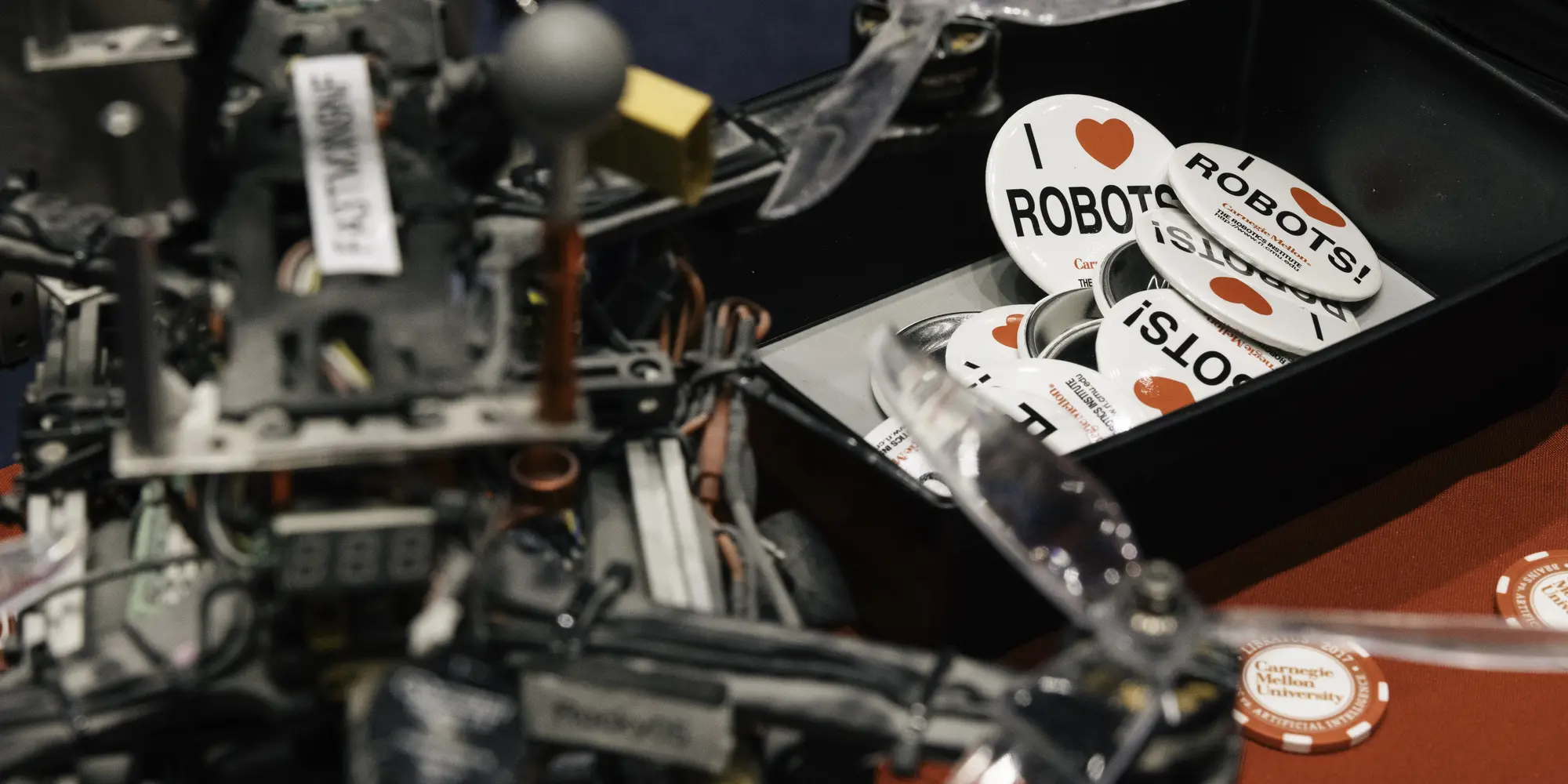
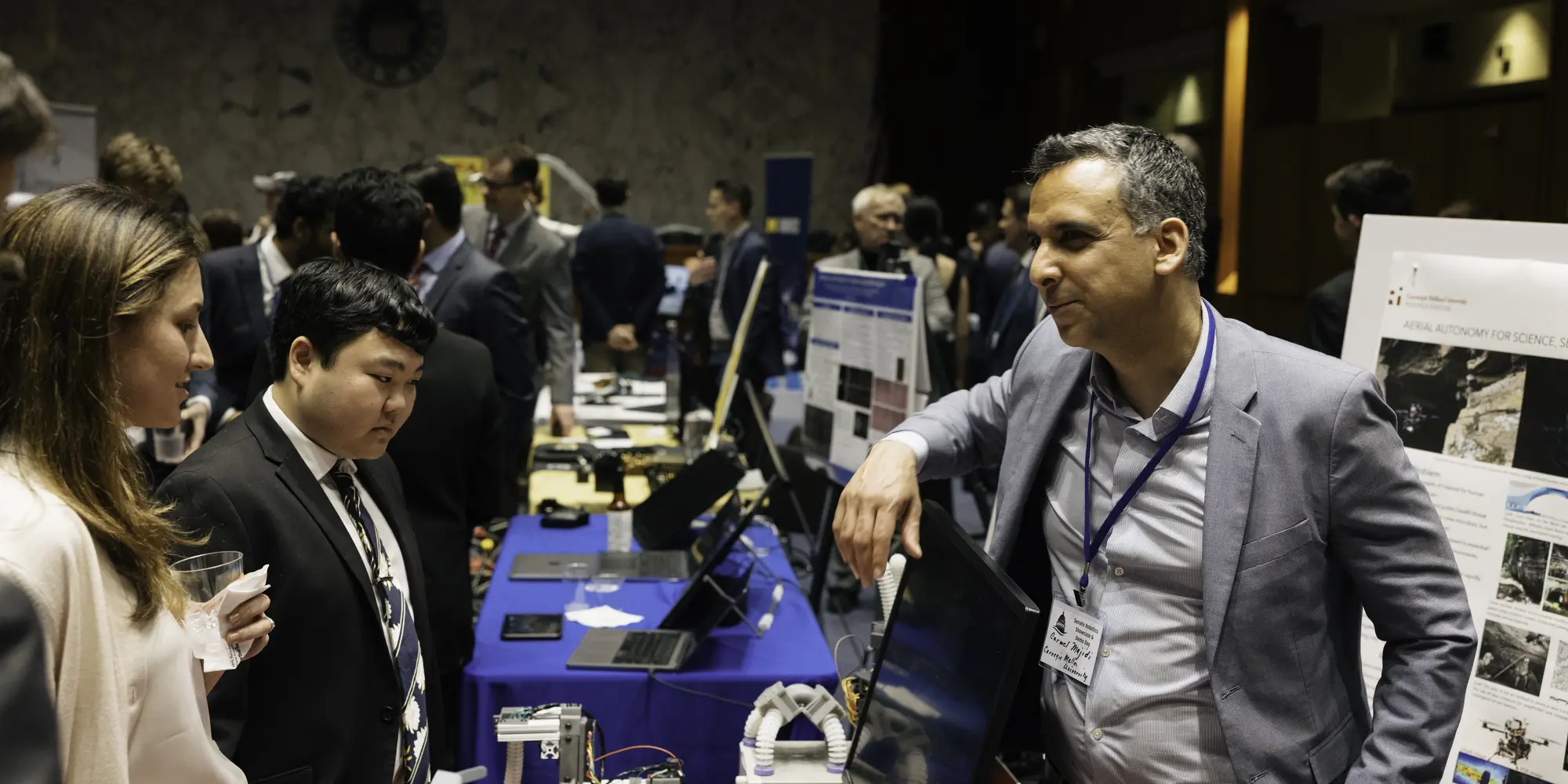
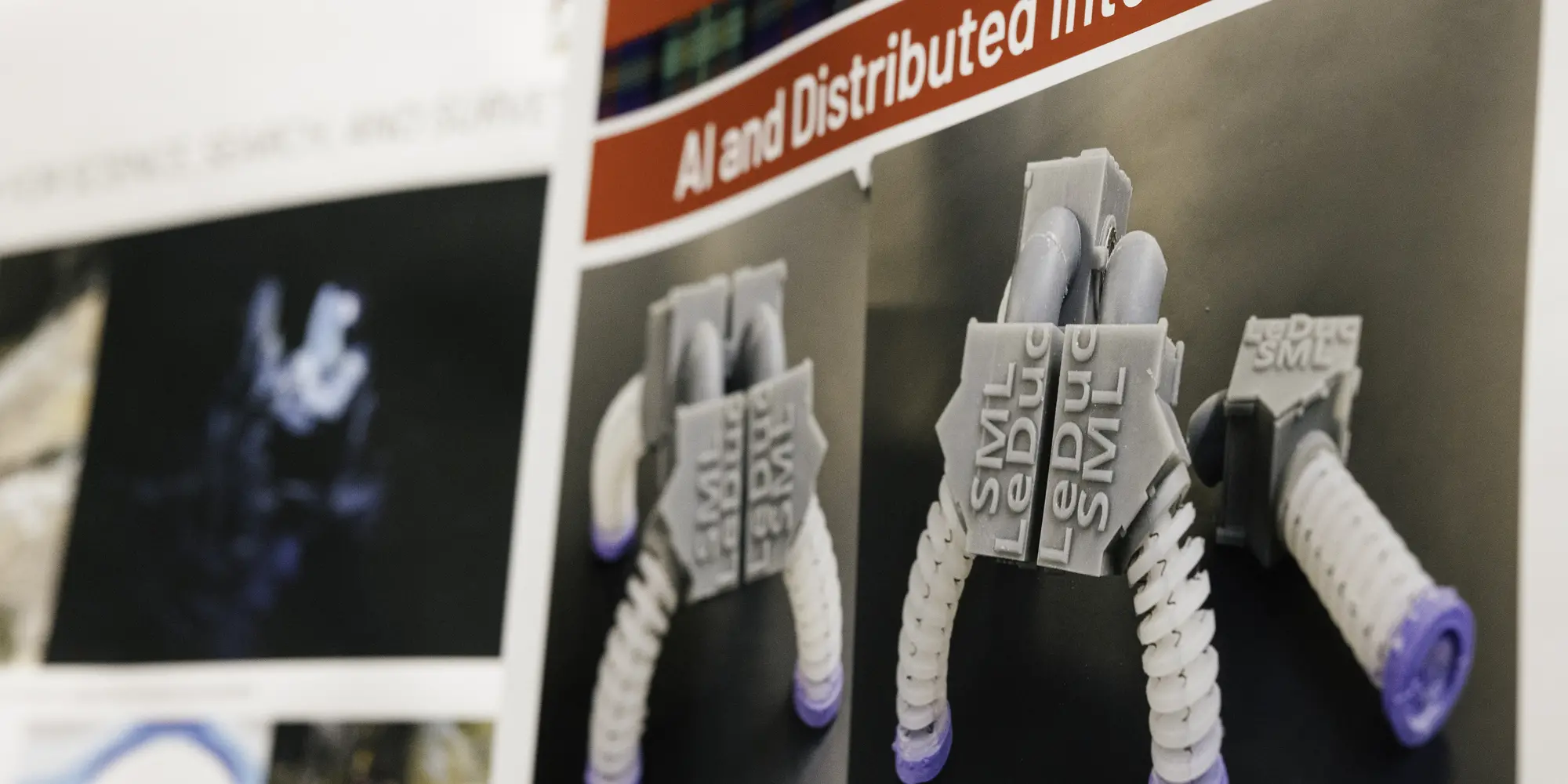
CMU Co-hosts Senate Robotics Showcase and Demo Day
Media Inquiries
Carnegie Mellon University, a global pioneer in robotics research, along with the Institute of Electrical and Electronics Engineers (IEEE) and the Computing Research Association, hosted members of Congress, the media and the public at the Senate Artificial Intelligence Caucus’s robotics showcase and demonstration, “Robotics for a Better Tomorrow,” April 30 on Capitol Hill.
The event was designed to advise national decision-makers on the critical role of robotics in enhancing U.S. productivity and regional economic development.
“The convergence of emerging technologies in AI and robotics holds the potential to create a new generation of robotics applications that will have significant impact on U.S. competitiveness,” said Theresa Mayer(opens in new window), vice president for research at CMU. “Continued U.S. federal investment in robotics research is essential for the U.S. to harness this potential and to keep pace with global competitors.”
Members of Congress and their staff engaged with robotics researchers, developers and students to better understand how the technology is evolving with AI, contributing to regional economic development and transforming the U.S. workforce.
The large second-floor hearing room in the Hart Senate Office Building on Capitol Hill was buzzing as robotic hands waved, humanoid robots smiled at guests, small autonomous vehicles whizzed by and robotic dogs played fetch in the halls.
Over 30 federal agency, industry and academic researchers from 17 states exhibited their work, including Carmel Majidi(opens in new window), the Clarence H. Adamson Professor of Engineering and leader of the Soft Machines Lab(opens in new window); Ph.D. students Richard Desatnik and Nathan Zimmerer; and Wennie Tabib(opens in new window), Robotics Institute systems scientist and director of the Resilient Intelligent Systems Lab(opens in new window).
A New Era for Basic Research
“This is a candy store for me,” said Sethuraman Panchanathan(opens in new window), director of the National Science Foundation and a computer scientist and engineer. “Seeing the amazing technologies emerging from your work is truly exciting.”
Panchanathan said that the investments made in basic research are being used right now on innovations we don’t even have words for yet.
“In two decades from now, maybe there will be a label that we will celebrate like we’re celebrating now for AI and quantum,” he said to the assembled robotics researchers. “We will celebrate those labels because of the fundamental research that’s being carried out in labs like yours. And the work that you’re doing today, in terms of the applied research that I got to see around the various tables, clearly testifies to the fact that we have, no doubt, the most innovative industries, the most innovative entrepreneurs and the most innovative academic researchers anywhere in the world.”
Illinois Congressman Bill Foster(opens in new window), co-chair of the Research and Development Caucus and Inventions Caucus and the only Ph.D. physicist in Congress, spoke of the importance of appropriating the historic funding that was authorized for research as part of the CHIPS & Science Act.
Panchanathan and Foster were joined at the podium by Jeff Burnstein(opens in new window), president of the Association for Advancing Automation; Stephen Ezell(opens in new window), vice president of global innovation, Information Technology & Innovation Foundation; and Henrik Christensen(opens in new window), distinguished professor of computer science at the University Of California San Diego, who announced the latest edition of the national robotics roadmap(opens in new window).
Pittsburgh, Regional Development Growth at Stake
Matthew Johnson-Roberson(opens in new window), director of CMU’s Robotics Institute(opens in new window), also spoke at the event, highlighting the role of robotics innovation in place-based economic growth in cities like Pittsburgh, where a vibrant innovation ecosystem and economy have grown around CMU’s robotics research.
“Pittsburgh is an example of how investment in not only infrastructure but in our human capital, can lead to real returns,” he said, citing examples like the National Robotics Initiative and NSF Innovation Corps Hubs Program. “These were programs that led to lots of the research you see here today, research that has translated into jobs, into companies, into economic impact that is bettering people’s lives.”
Panchanathan celebrated the researchers showcasing their work.
“This work that you’re doing here, let it not be only in the halls of Congress that you’re exhibiting this,” said Panchanathan. “I want you to take this out and show the public that this is real stuff that has an impact on real people. That is what it takes for people to get convinced that this is going to make a difference in their life and therefore the betterment of the nation.”
